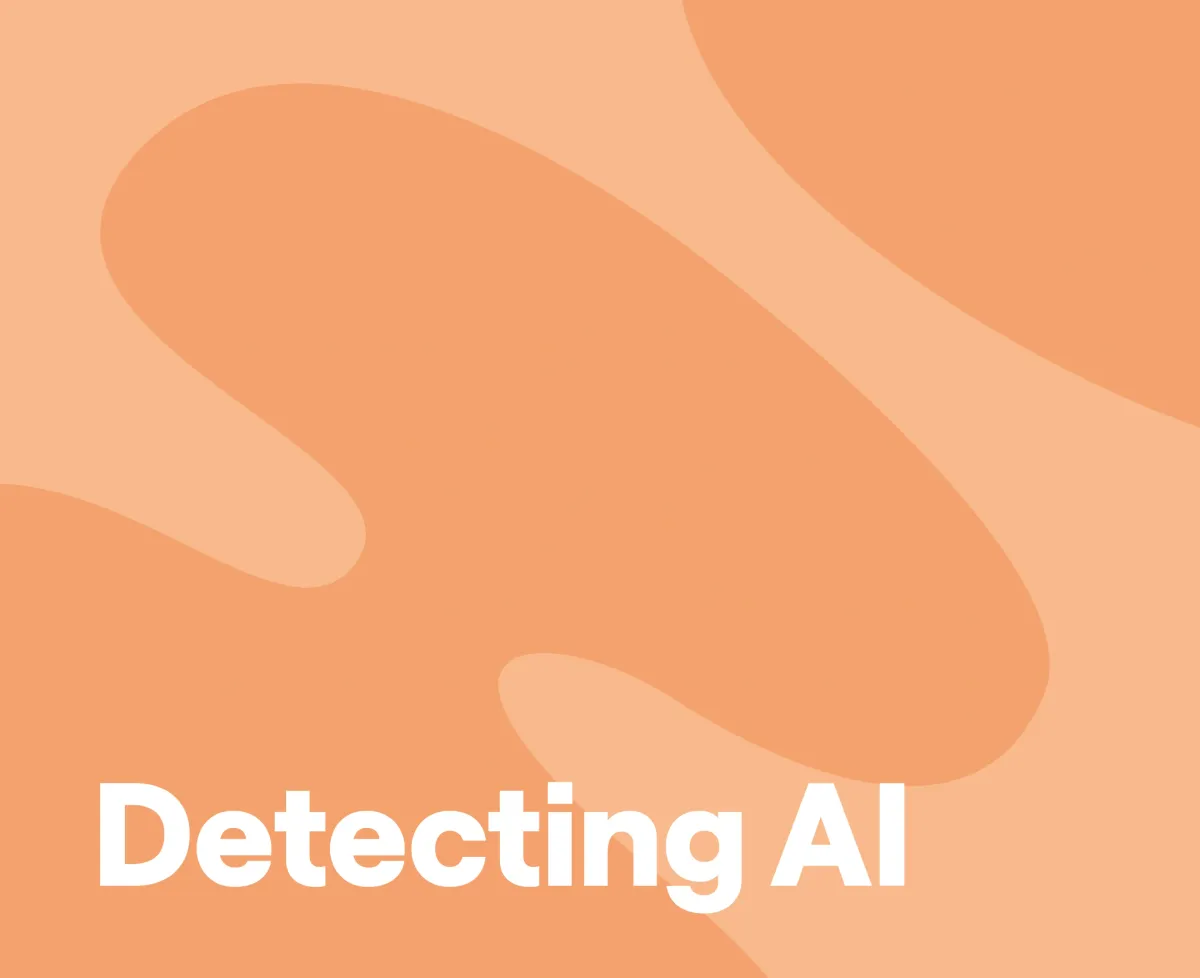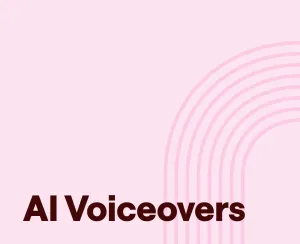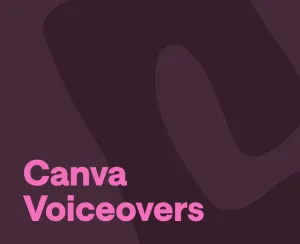We work with AI voices every day. We build them, fine-tune them, and use them to help creators tell their stories. So we get the appeal. They’re fast, flexible, and honestly? Some of them sound pretty amazing.
But sometimes you hear a voice and think, “Wait… was that real?” And once the question’s in your head, it’s hard to shake. It’s like staring at a perfect photo and wondering if it’s been retouched. You just want to know.
If you’ve ever wanted to spot the difference between human and AI, even out of sheer curiosity, you’re in the right place. We’re not here to cast doubt on AI voices (we make them, after all). We just think it’s kind of fun—and useful—to understand what you’re hearing.
The Rise of AI Voices (and Why You Hear Them Everywhere)
Throughout the history of AI voices, there was a time when AI voices sounded like robots from an old sci-fi movie. Flat, awkward, mechanical. The kind of thing you’d only hear coming out of a GPS or a toy from a bargain bin.
But, today’s AI voices can read audiobooks, narrate YouTube explainers, host podcasts, and even carry emotional weight. A lot of that comes down to deep learning models that are trained on real human speech. These models learn how we pause, how we stretch vowels, how we emphasize one word and soften the next. In short, they learn how we sound when we mean something.
You’ve probably heard an AI voice without realizing it. Brands are using them in explainer videos. Podcasters use them for trailers or intros. Creators use them to save time or bring a second voice into the mix without calling a friend at 2 a.m. And with tools like Podcastle, you can even create your own voice clone and have it read your script for you.
AI voices aren’t rare anymore. They’re showing up in content everywhere—because they’re fast, reliable, and getting harder to detect. But that doesn’t mean they’re flawless. You can still hear the seams, if you know where to listen.
Why Someone Might Want to Detect an AI Voice
Most people don’t go around trying to expose every synthetic voice they hear. Sometimes you’re just wondering: Was that a person… or a really well-trained model pretending to be one?
There’s also value in knowing the difference, especially if you create content yourself. You might be listening to a podcast, watching a narrated video, or browsing a voiceover portfolio, and you want to know what’s real and what was generated, and whether you could do the same with your content.
Some, on the other hand, care for ethical reasons. If you’re watching a documentary or listening to an interview, you probably want to know if that voice was synthesized. And in these fields, along with journalism or education, using AI voices without clear disclosure can raise questions: Are they trustworthy? Are they transparent? Are they a reliable source of information?
In any situation, the question still stands: how do you actually tell?
The Most Common Signs an AI Voice Is Speaking
AI voices have come a long way, but they still miss certain human touches. The mistakes are subtle. They don’t scream “robot”, but you might be able to tell if an AI voice feels off.
Here are a few of the biggest tells.
1. Overly smooth delivery
AI voices are great at flowing through a sentence. Maybe too great. There’s no hesitation, no filler, no “um” or breath between thoughts. While that might sound polished, it can feel unnatural. Humans stumble. We pause when we think. We change course mid-sentence.
2. Unusual pacing
Sometimes the rhythm is just… odd. You’ll hear a tiny delay where there shouldn’t be one, or a rush through a sentence with no room to breathe. AI voices can have perfect pitch, but weird timing.
3. Flat emotions
Even when they’re programmed to sound angry, excited, or sad, the feeling doesn’t always land. A happy AI voice might sound more like a customer service rep than a friend sharing good news. The tone may hit the right notes, but it often misses the texture or context.
4. Repetitive speech patterns
AI voices tend to fall into a kind of melodic loop. It’s like they learned to speak by imitating the same person over and over. But human voiceovers change rhythm constantly, as we speed up, slow down, mumble, enunciate, and more. AI voices often don’t vary enough.
5. Mispronunciations
This is one of the easiest tells. Names, slang, abbreviations, brand names, or uncommon words are often tripped over. You’ll hear a weird syllable stress or a pronunciation that no native speaker would use.
While none of these signs on their own prove anything, once you notice two or three in the same clip, you can start connecting the dots and suspect whether AI is at play.
What About When AI Voices Do Sound Human?
Some voices are nearly impossible to spot. That’s not an exaggeration.
With the rise of voice cloning and expressive text-to-speech models, AI can now mimic individual quirks, like the way someone draws out vowels or throws in little breaths at the end of a sentence.
In these cases, the usual tells might be hidden under editing. Maybe there’s background music, or a second speaker. Maybe the audio has been run through filters to sound more natural or emotional. Sometimes it’s chopped into clips so short, you never notice the pacing or pattern.
And sometimes? The voice is simply that good.
You could listen for hours and never guess it was synthetic. That doesn’t make it misleading. In many cases, it’s just a production choice, like using stock music or adding sound effects.
Still, for those who really want to be sure, there are ways to dig deeper.
Can You Spot the Difference?
We've put together two different adreads. Which one sounds like AI to you? (If you want to check if you're right, the answer is near the bottom of this page.)
Tools to Detect AI Generated Content
If you’re curious enough to dig into the “Is this AI?” question, there are a few tools out there that can help. None are perfect, and most are still evolving, but they can give you clues, especially when your ears aren’t totally sure.
Here’s a quick breakdown of some platforms that try to spot synthetic speech.
1. Hiya Deepfake Voice Detector
Hiya’s Deepfake Voice Detector is a free Chrome extension that checks for AI-generated voices as you browse the web. It works in real time, scanning audio on platforms like news sites and social media without needing you to upload anything. The tool uses Hiya’s in-house voice analysis tech, which is built on years of speech and signal processing research. It’s made for everyday users who want to stay informed while scrolling.
2. AI Voice Detector
AI Voice Detector lets you upload audio or scan voices directly from apps like YouTube, WhatsApp, or Zoom to check if they’re AI-generated. It supports short clips and has built-in tools to remove background noise and music before analysis. It also claims to work across languages and major voice synthesis platforms, not just one or two. There’s even a browser extension if you’d rather test audio while casually browsing.
3. Ircam Amplify AI Speech Detector
Ircam Amplify’s tool is designed for journalists, newsroom teams, and anyone working with audio that might’ve been tampered with. It detects synthetic voices even when the file’s been distorted, filtered, or heavily edited. The platform uses segmental analysis to break audio into parts, flag suspicious sections, and provide confidence scores. It also offers an API for companies that want to build detection into their own workflows.
4. Resemble AI's Detection API
Resemble is known for creating AI voices, but they’ve also developed a tool to help detect them. Their detection API is used by platforms and developers who want to verify whether a voice is real or synthetic. This one’s more for people building products than casual users, but it shows how voice detection is becoming part of the larger ecosystem.
5. Hive AI Deepfake Detector
Hive offers several AI detection tools, and one of them focuses on audio. It’s built more for enterprise-level use—think media companies or moderation teams—but you can test it online. It gives you a probability score based on characteristics in the file you upload. The design is clean and straightforward, even for beginners.
6. Your Ears
Seriously. After a while, you get a feel for it. AI voices often have a consistent rhythm, a tone that doesn’t change much, or an emotional range that feels just a little too polished. Once you’ve heard a few, the patterns become easier to catch.
Ethics: Should AI Voices Be Labeled?
This question comes up more and more: If a voice is generated, should we be told?
There’s no universal rule yet, but the conversation is growing. In journalism, synthetic voices can raise trust issues. If a quote is voiced by AI but written by a real person, should the audience know? In education, if a lesson is narrated by a cloned voice, does it matter? Some say yes, for transparency. Others argue that if the content is accurate and well-produced, the delivery method shouldn’t be the focus.
For creators, the choice often comes down to intent. If you’re using an AI voice to speed up your process, test script ideas, or bring in a second narrator, disclosure can feel optional. But when the stakes are high, like in political content, product endorsements, or sensitive topics, being clear about how a voice was generated can go a long way in building trust.
At Podcastle, we give creators options. You can use your real voice, an AI-generated one, or even clone your own voice for consistency. Whatever route you take, the power to create something meaningful stays in your hands. But so does the responsibility to use that power thoughtfully.
Use AI Voices On Purpose
There’s something powerful about having options. You can record your voice. You can bring in a guest. Or you can open up a library of AI voices and let the machine do the talking.
A lot of creators aren’t using AI voices to hide anything. They’re using them because they solve real problems. Maybe you’ve got a cold but a deadline’s looming. Maybe you wrote a great script and just want to hear it out loud before recording it yourself. Maybe you want a second narrator, but don’t have the time to coordinate with someone else.
That’s where tools like Podcastle come in. You can choose from dozens of AI voices, all with their own tone and pacing. Or you can clone your own voice to keep things consistent across episodes. You can use AI to build a rough draft, or ship a finished piece of content.
Some creators even lean into the synthetic vibe. They pick a voice that sounds just robotic enough to feel intentional. Think retro-futuristic podcast intros or dystopian storytelling. It’s not about faking anyone out—it’s about style.
The trick is to use AI voices the same way you’d use music, color grading, or typography. They’re creative tools. The more you understand how they work—and how they sound—the better you can use them to tell a story that actually lands.
AI or Human? Why It Helps to Know
At the end of the day, knowing how to spot an AI voice is a skill. Like spotting a filter in a photo. Or catching CGI in a scene. It’s not about ruining the magic—it’s about understanding the craft.
And that matters more now than ever. Because content creation is changing—fast. AI tools are giving creators new ways to build, experiment, and share ideas without hitting as many walls. Voices are just one piece of it. There are entire workflows being reimagined, from script to screen.
So the question isn’t “Is this real?
It’s “How was this made—and what can I make with the same tools?”
Curious to try an AI voice yourself? Explore Podcastle’s voice tools and see how they sound in your hands.
AdRead Answers:
We thought it would be interesting to see if you could tell the difference between a human and an AI ad read. The twist? Both were AI-generated. Did you catch the trick, or did we manage to surprise you?










